Wilderness survival is a comprehensive guide to staying safe in remote areas. It teaches essential skills like finding water, building shelter, and starting fires. Being prepared is key to navigating nature effectively and ensuring survival in challenging environments.
1.1 Importance of Preparedness
Preparedness is the cornerstone of wilderness survival, ensuring safety and confidence in remote environments. Having the right gear, knowledge, and mindset can prevent crises and increase chances of survival. It involves understanding potential risks, such as harsh weather, limited resources, and navigating unfamiliar terrain. A well-prepared individual can quickly respond to emergencies, conserving energy and staying calm under pressure. This section highlights the necessity of planning, packing essential items, and developing skills to thrive in the wild. By prioritizing preparedness, adventurers can minimize dangers and maximize their ability to cope with challenges, ultimately enhancing their wilderness experience.
1.2 Basic Survival Principles
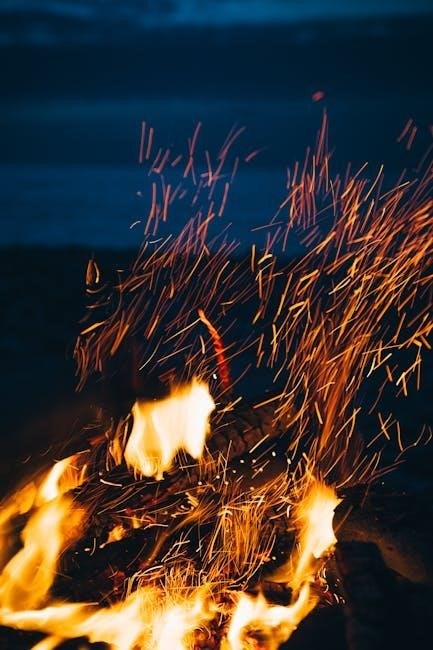
Mastering basic survival principles is crucial for staying alive in the wilderness. These principles include maintaining a positive mindset, conserving energy, and using resources efficiently. Staying calm helps in making rational decisions, while avoiding unnecessary exertion preserves strength for critical tasks. Shelter, water, and fire are the top priorities, providing protection from elements and improving morale. Additionally, signaling for help and navigating effectively are essential skills. These principles form the foundation of wilderness survival, ensuring individuals can adapt to unexpected challenges and increase their chances of rescue or self-rescue. By adhering to these guidelines, anyone can enhance their ability to survive and thrive in nature.

Essential Survival Skills
Essential survival skills include finding water, building shelter, starting fires, signaling for help, and navigating. Mastering these skills is vital for staying safe in the wilderness.
2.1 Finding and Purifying Water
Finding and purifying water is crucial for survival. Locate water sources like streams or ponds, but ensure it’s safe to drink. Methods include boiling, using sand filtration, or solar disinfection. Always prioritize water purification to avoid harmful pathogens and contaminants, ensuring hydration without risking health. Proper techniques can make even questionable water sources safe for consumption, vital in wilderness environments where clean water may be scarce. Remember, dehydration can set in quickly, making reliable water access essential for survival. Always carry a water filter or purification tablets as part of your emergency kit to guarantee safe drinking water when needed most.
2.2 Building Shelter
Building shelter is a fundamental survival skill, providing protection from harsh weather and wildlife. Use natural materials like branches, leaves, and snow to construct lean-tos, debris huts, or snow shelters. Choose a dry, elevated spot to avoid flooding and ensure better insulation. Start with a sturdy frame using fallen trees or poles, then cover it with layered foliage for waterproofing. In snowy conditions, pack snow densely to form walls or dig into drifts for a protected space. A well-built shelter conserves energy and maintains body heat, crucial for survival. Always prioritize shelter construction to create a safe refuge in the wilderness. Proper techniques can make even basic structures effective against the elements. Remember, shelter is your first line of defense in a survival situation.
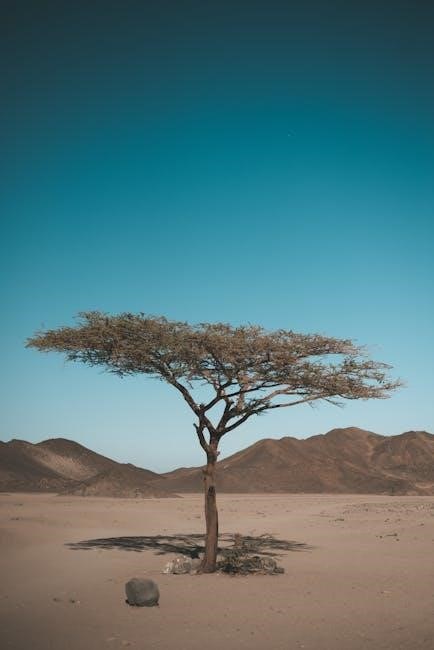
Fire Starting Techniques
Mastering fire starting is crucial for warmth, cooking, and signaling. Techniques include flint and steel, building fire pits, and using natural materials to sustain flames effectively.
3.1 Using Flint and Steel
Using flint and steel is a reliable method for starting fires in the wilderness. Hold the flint firmly and strike it with steel to produce sparks. Aim sparks at a tinder nest to ignite. Keep the tinder dry for best results. This technique requires patience and practice to master. Always carry a flint and steel as a backup to modern lighters or matches. Proper technique ensures fire starting even in damp conditions. Practice this skill to build confidence in fire starting abilities. A well-made fire provides warmth, light, and a way to cook food, essential for survival.
3.2 Building a Fire Pit
Building a fire pit is essential for safe and efficient fire management in the wilderness. Start by selecting a flat, dry spot away from flammable materials. Clear the area of leaves, grass, and debris. If possible, create a fire ring using rocks to contain the fire. Dig a shallow pit in the center for the fire, ensuring good airflow. Line the pit with small rocks or gravel to improve drainage. Keep the fire pit small to conserve fuel and reduce environmental impact. Always fully extinguish the fire before leaving. A well-constructed fire pit helps minimize wildfire risks and ensures a controlled blaze for cooking and warmth. Proper construction is key to both safety and functionality in the wild.

Signaling for Help
Signaling for help is crucial for wilderness survival. Use smoke, mirrors, or reflective objects to attract attention. Clear signals increase visibility to rescuers and improve chances of being found.
4.1 Creating Smoke Signals
Creating smoke signals is an effective way to alert rescuers. Build a fire in an open area, using dry wood for visibility. Add green leaves or wet wood to produce thick smoke. Smoke signals are most visible during daylight, especially when winds are calm. Create three short bursts of smoke, as this is an internationally recognized distress signal. Ensure the fire is extinguished after use to prevent unintended wildfires. Smoke signals can be seen from great distances, making them a reliable method for communication in remote areas. Always follow safety guidelines to avoid starting larger fires. This method is simple yet effective for signaling help in wilderness survival situations.
4.2 Using Reflective Objects
Reflective objects are a crucial tool for signaling help in wilderness survival. Use mirrors, shiny metal pieces, or polished surfaces to reflect sunlight toward rescuers or aircraft. Angle the object to catch the sun’s rays and direct them toward your target. This method works best during daylight, especially when the sun is high. Carry a compact mirror or other reflective items in your survival kit for emergencies. Reflective signaling can be seen from great distances, making it an effective way to communicate. Combine this technique with other signals, like arranging rocks or creating patterns, to increase visibility. Always stay patient and persistent, as rescue teams may take time to locate you. Reflective objects are simple yet powerful tools for wilderness survival situations.
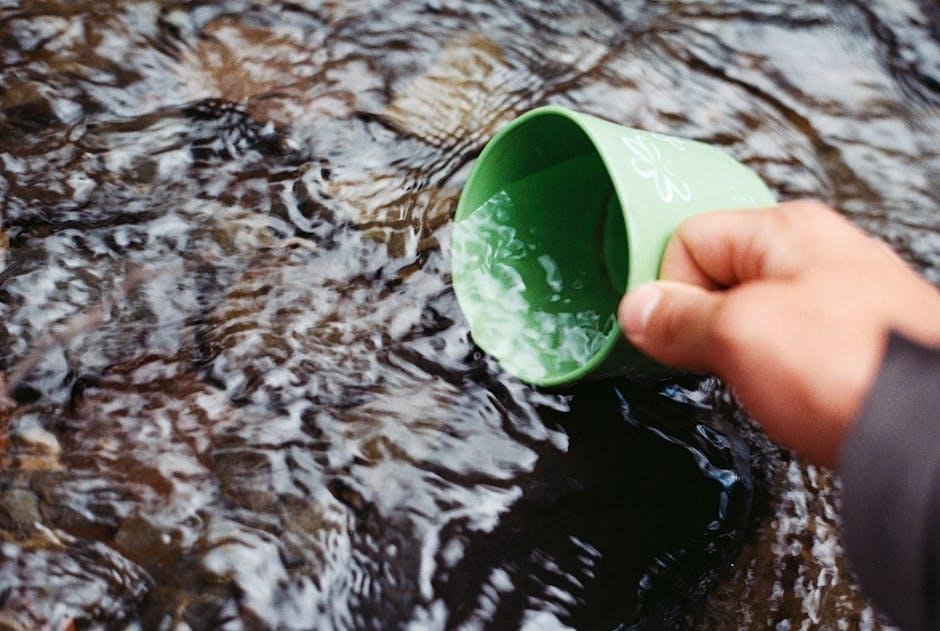
Wilderness Navigation
Wilderness navigation involves understanding terrain, using celestial navigation, and marking trails to avoid disorientation. It requires observation skills and awareness of natural directional indicators to stay on course.
5.1 Reading Natural Landmarks
Natural landmarks are crucial for wilderness navigation. Features like streams, ridges, and valleys offer directional clues. Moss often grows on north-facing tree trunks, while sun position helps estimate directions. Trees leaning uphill indicate south-facing slopes, aiding orientation. Seasonal changes, such as berried shrubs or animal tracks, also provide guidance. Recognizing these patterns helps maintain course without modern tools. Paying attention to natural signs enhances survival and navigation skills in remote areas.
5.2 Using a Compass
A compass is an essential tool for wilderness navigation. To use it effectively, hold it level and steady, ensuring the magnetic needle aligns with the magnetic north marker. Rotate the dial to set your desired bearing, then align the compass arrow with your target. Always account for declination, the difference between magnetic and true north, by adjusting the dial. Clean the compass regularly to avoid interference from dirt or debris. Use landmarks to stay on course and take bearings from recognizable features. Practice using the compass in different terrains to improve accuracy. Remember, a compass is only reliable if handled correctly, making it a vital skill for wilderness survival.
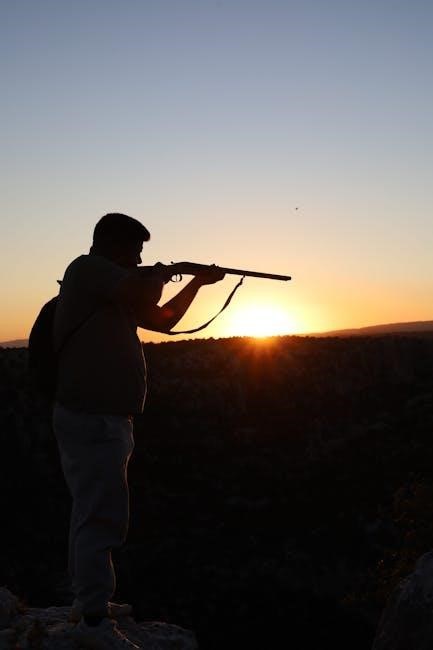
Food Procurement
Wilderness survival requires securing a reliable food source. Techniques include foraging for edible plants and trapping small game. Knowledge of these methods ensures sustenance, keeping you nourished and focused for survival.
6.1 Foraging for Wild Edibles
Foraging for wild edibles is a crucial survival skill, providing essential nutrients. It involves identifying safe, edible plants like berries, leaves, and roots. Proper identification is vital to avoid poisoning. Always research or consult a trusted field guide before consuming any plant, as some species can be deadly. Start with common plants like dandelions, wild garlic, and blueberries, which are easily recognizable. Avoid plants with milky sap, strong odors, or unusual colors. Foraging requires patience and knowledge, ensuring a sustainable food source in the wild. It complements other procurement methods, helping you stay nourished during extended survival situations.
6.2 Trapping Small Game
Trapping small game is an effective way to procure food in the wilderness. Common techniques include snares, pitfalls, and traps made from natural materials. Snares are simple and efficient, using cordage to catch animals by the neck or leg. Pitfalls require digging and camouflaging a hole, often baited with food. Traps should be set in areas with high animal traffic, such as game trails. Use materials like sticks, rocks, and vines to construct them. Knowledge of animal behavior is crucial for successful trapping. Always prioritize ethical and humane practices, ensuring traps are used responsibly. Trapping small game provides a sustainable food source, helping you survive longer in remote environments. Practice and patience are key to mastering this essential survival skill.
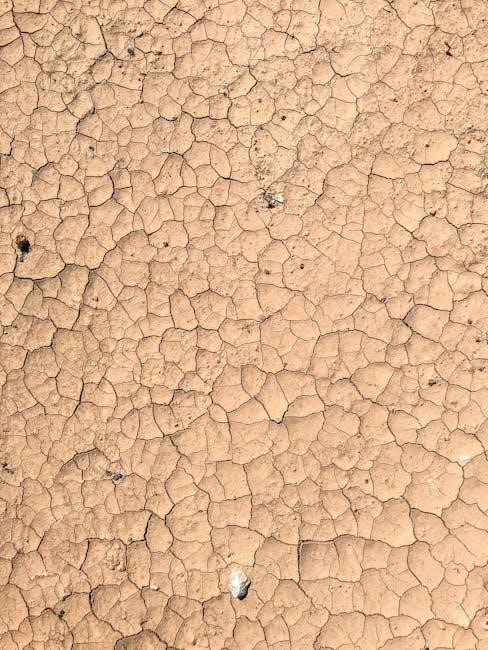
Mental and Physical Preparedness
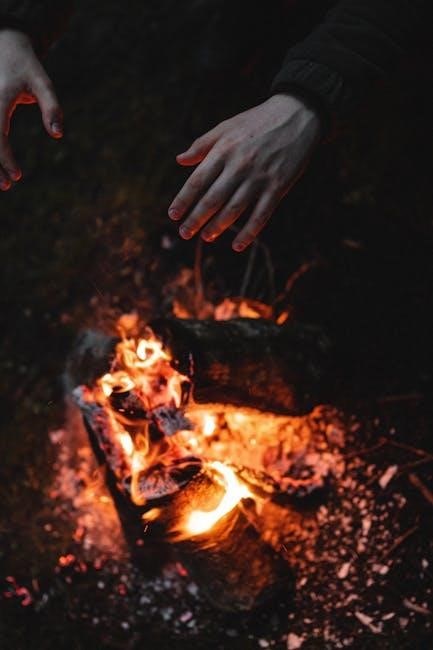
Mental resilience and physical stamina are critical for wilderness survival. Managing stress, fear, and anxiety ensures clear decision-making. Staying physically active maintains energy and endurance, enhancing survival success.
7.1 Managing Fear and Stress
Managing fear and stress is crucial for effective wilderness survival. Anxiety can cloud judgment, leading to poor decisions. Techniques like deep breathing, focus on immediate tasks, and positive visualization help maintain mental clarity. Staying calm allows for better problem-solving and resource allocation. Prioritizing safety and breaking challenges into manageable steps reduces overwhelm. Experience and preparation also build confidence, diminishing fear. Recognizing early signs of stress, such as rapid heartbeat or tunnel vision, enables proactive coping. A clear mind enhances situational awareness, increasing chances of survival. Remember, panic is a survival enemy; Stay composed to think and act effectively in crises.
7.2 Staying Physically Active
Staying physically active is vital for wilderness survival, as it maintains strength and endurance. Regular movement prevents muscle atrophy and keeps the body adaptable to challenges. Engage in moderate exercises like walking or stretching to conserve energy while staying fit. Avoid overexertion, which can lead to fatigue or injury. Incorporate activities that contribute to survival, such as gathering firewood or foraging, to stay productive. Proper hydration and nutrition are essential to sustain physical efforts. Rest when needed to recover and avoid burnout. Mental health also benefits from physical activity, reducing stress and maintaining morale; Adapt your exertion to environmental conditions, pacing yourself to endure long-term survival situations. Consistent, balanced activity enhances overall resilience in the wild.

Wilderness First Aid
Wilderness first aid focuses on treating injuries and infections in remote areas. Proper wound cleaning and dressing are essential to prevent infection. Use antibacterial ointments and cover wounds securely. For fractures, immobilize the affected area with splints. Monitor for signs of infection, such as redness or swelling, and address them promptly. Carry a well-stocked first aid kit with bandages, antiseptics, and pain relievers. Knowledge of basic first aid techniques can significantly improve survival chances in the wild. Stay calm and act decisively to provide effective care until professional help is available.
8.1 Treating Injuries
Treating injuries in the wilderness requires immediate and effective action. First, assess the severity of the injury to determine the best course of treatment. For wounds, clean the area with sterile or purified water to remove debris and bacteria. Apply an antiseptic ointment to prevent infection and cover the wound with a bandage or dressing. Elevate injured limbs to reduce swelling and improve blood flow. For burns, cool the affected area with clean water and cover it with a non-stick dressing. Immobilize fractures or sprains using splints to prevent further damage. Monitor the injury for signs of infection, such as redness, swelling, or increased pain, and seek medical attention as soon as possible. Proper wound care is crucial for preventing complications and promoting healing in a wilderness setting.
8.2 Managing Infections
Managing infections in the wilderness is critical to prevent minor injuries from becoming life-threatening. Ensure all wounds are cleaned with purified water and treated with antiseptic solutions to eliminate bacteria. Apply topical antibiotics to reduce the risk of infection and cover the wound to protect it from further contamination. Monitor for signs of infection, such as redness, swelling, increased pain, or pus. If an infection develops, maintain cleanliness and apply warm compresses to promote drainage. Administer oral antibiotics if available, but use them judiciously to avoid resistance. Seek medical help as soon as possible, as untreated infections can lead to severe complications. Proper hygiene and early intervention are key to managing infections effectively in remote environments.
Mastering wilderness survival skills ensures safety and confidence in nature. Practice, preparedness, and mental resilience are key to thriving in remote environments and overcoming unexpected challenges effectively.
9.1 Final Tips for Survival
Stay calm and maintain a positive mindset to make clear decisions. Always prioritize water, shelter, and fire for basic survival needs. Use natural resources wisely and conserve energy. Learn to identify edible plants and avoid harmful ones. Signal for help using smoke, mirrors, or bright colors during the day. Stay visible and avoid wandering aimlessly. Carry a survival kit with essentials like a knife, rope, and matches. Practice navigation skills using the sun, stars, and landmarks. Avoid risky terrain and unpredictable weather conditions. Trust your instincts and adapt to changing situations. Remember, preparation and knowledge are your greatest tools for wilderness survival.
9.2 Importance of Practice
Regular practice is crucial for mastering wilderness survival skills. Repetition builds muscle memory and confidence, ensuring you can perform tasks efficiently under stress. Train in various environments to adapt to different conditions. Practice navigation, shelter building, and fire starting until they become second nature. Learning theory is essential, but hands-on experience is vital for real-world application. Schedule regular outdoor sessions to refine your techniques and stay prepared. The more you practice, the better equipped you’ll be to handle unexpected challenges. Consistent training also helps identify gaps in your knowledge and gear, allowing you to improve over time. Remember, survival skills are perishable and require ongoing practice to remain effective.
